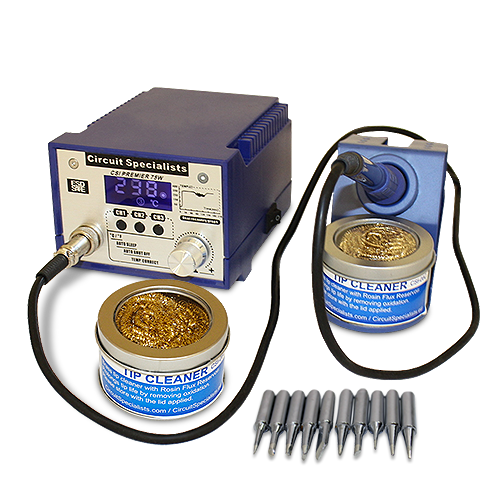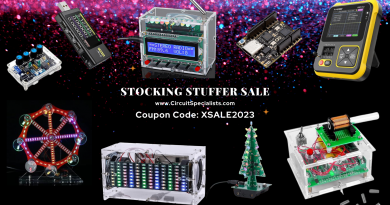The Best Soldering Station for Lead-Free Solder Review
There are several established brands — including Weller, Metcal, Pace, Circuit Specialists, Goot, SolderWerks (BlackJack), and Hakko — that offer quality lead-free soldering stations. Whether you work in a repair shop, research and design, or are a hobbyist, with normal use you should get several years of reliable service from a soldering station from any of these brands. You may need to replace consumables such as the soldering iron tip, heating element, and perhaps even the soldering iron handle at some point, but the main body of the soldering station should perform well for several years.

When you are selecting the best soldering station, you will want to consider what sorts of projects you’ll be working on. For instance, these days you’ll need to use lead-free solder on multi-layer boards, and you will need a soldering station with a fast temperature recovery time to use lead-free solder. If you attempt to use lead-free solder with an older soldering station that has a slower recovery time, you will be forced to increase the temperature to compensate for the slow thermal recovery time. Although this will melt the lead-free solder, the temperature will drop and not recover quickly enough, causing the solder to stop flowing. When this happens you end up applying heat for too long, which can damage parts as well as the PCB.
There are two basic methods for achieving fast thermal recovery when using lead-free solder. One is simply to design the soldering station with a higher-wattage heating element. In the past stations were often rated at about 35 to 40 watts, but today a reasonably priced soldering station will typically have a minimum of 60 watts —though it’s even better to opt for a station with a 75 watt heating element. Another popular method for improving thermal recovery is to integrate the heating element and the soldering iron tip. This method keeps the temperature at the tip very stable, as the element can react very quickly and transfer the energy to the tip almost instantaneously. The only downside to this design is that tips are quite a bit more expensive, since you are purchasing an integrated tip/heating element assembly.
Even if you do not plan to use lead-free solder, remember that Europe now requires that nearly all pieces of electronic equipment must meet RoHS environmental standards. The USA has not yet implemented this requirement, but most manufacturers of electronics products are located in Asia and they manufacture their equipment with European standards in mind. You will most likely need to use lead-free solder at some point, even in the USA, so it’s wise to pick a soldering station that can do the job when lead-free solder is necessary.
